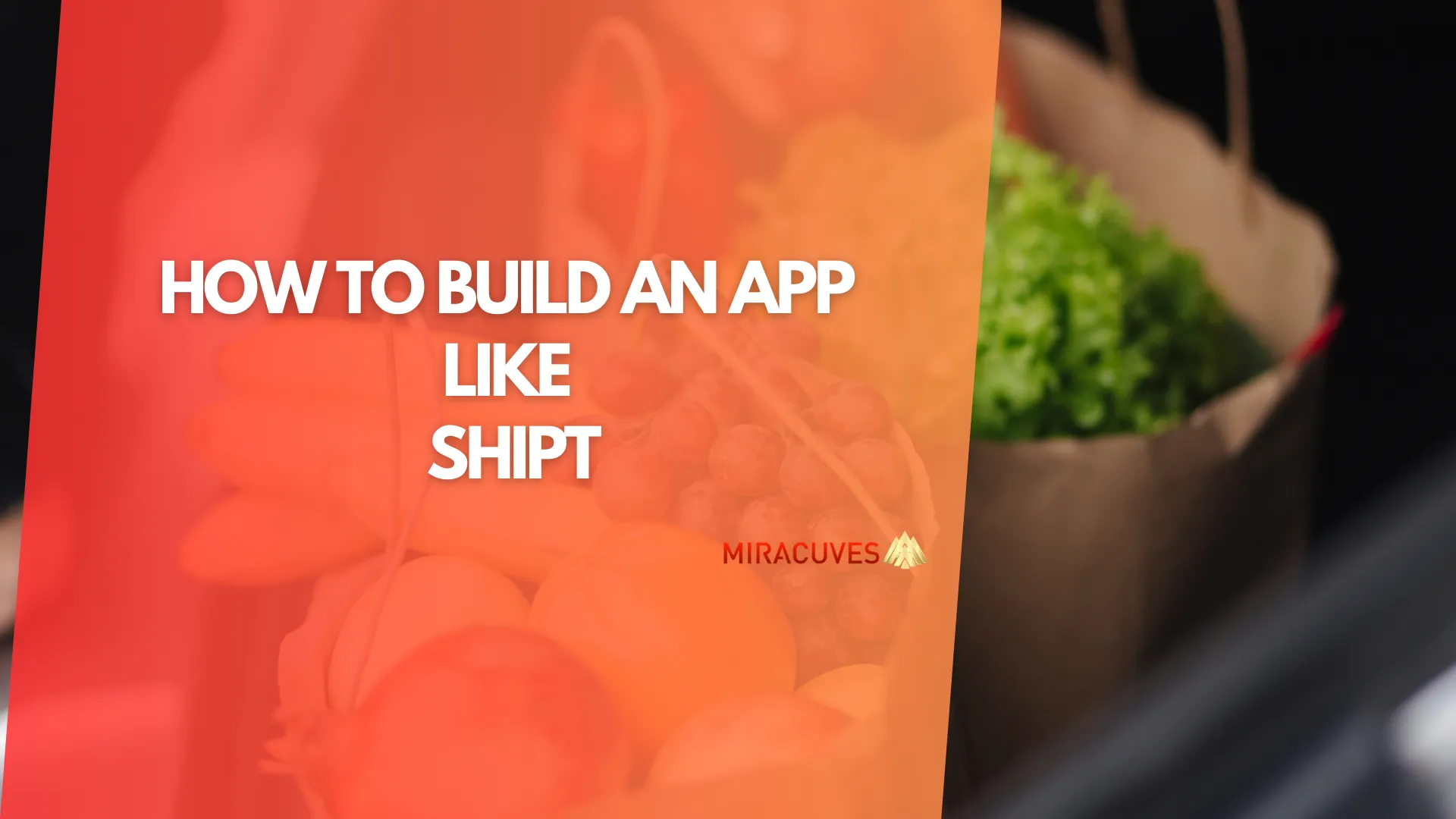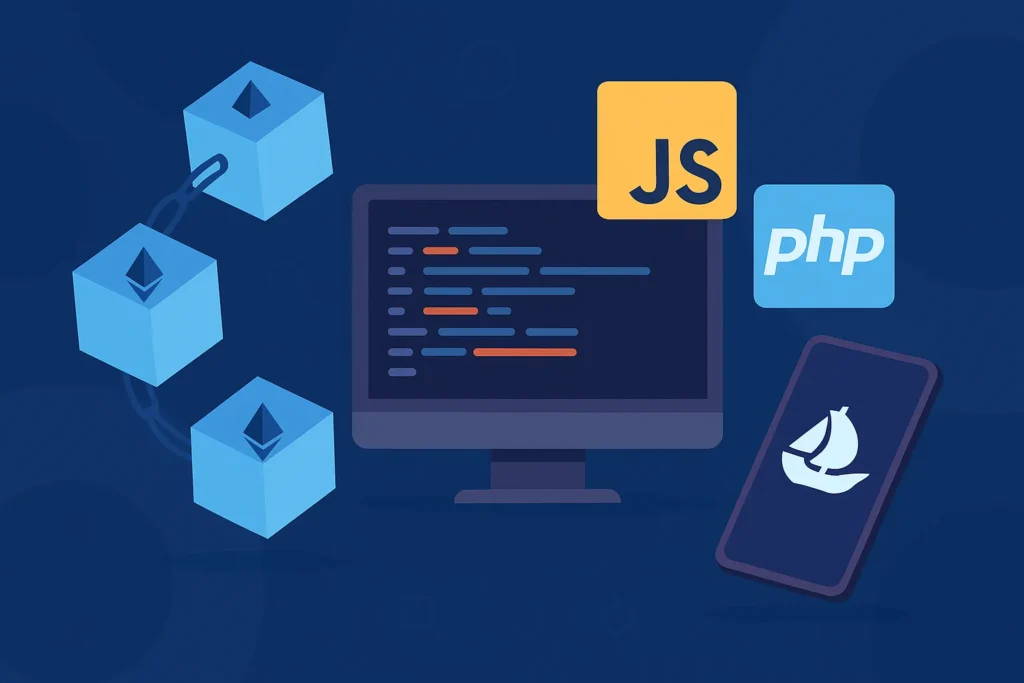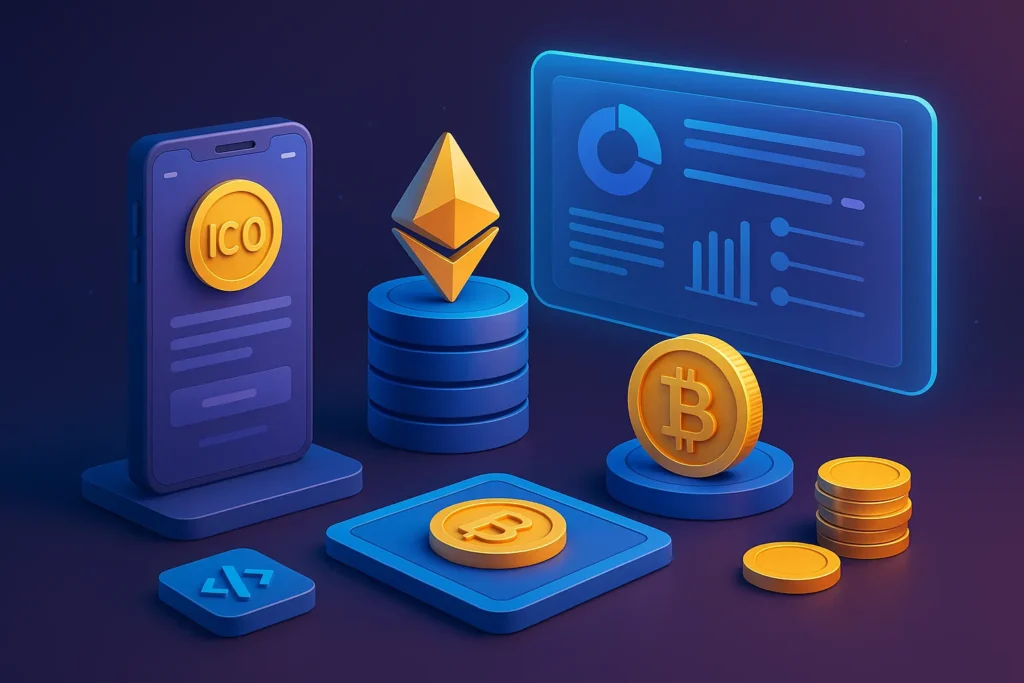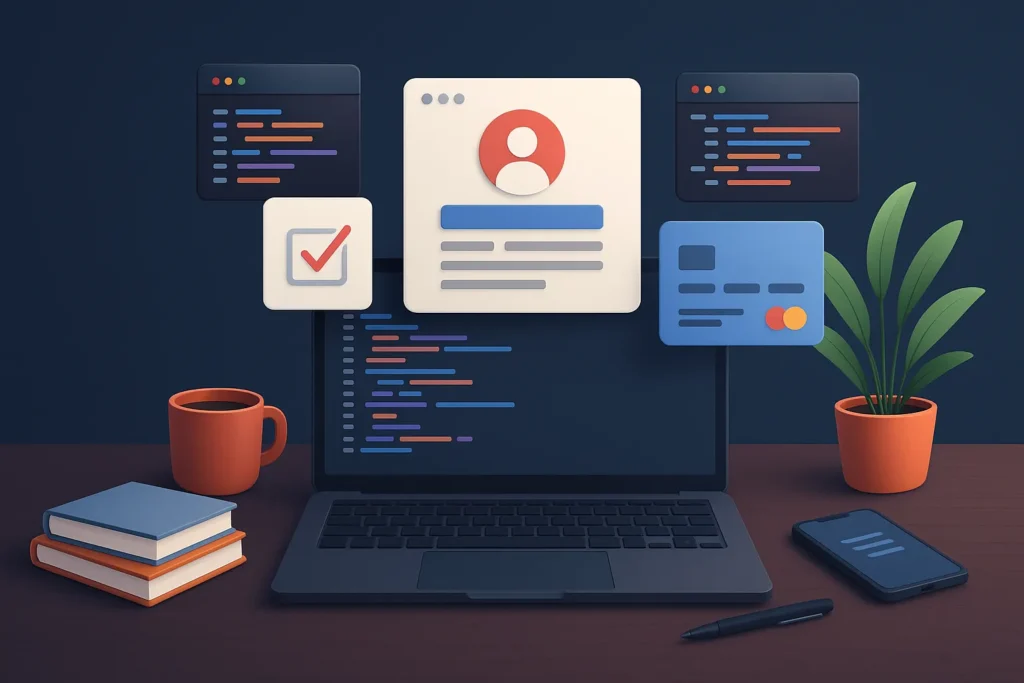In today’s fast-paced world, convenience is king, and grocery delivery services are leading the charge in reshaping how we shop. Apps like Shipt have gained immense popularity by providing an effortless way for consumers to order groceries from the comfort of their homes. With just a few taps on a smartphone, users can browse a wide selection of products, choose their favorites, and have them delivered right to their doorstep—often within hours.
The rise of on-demand grocery apps is not just a trend; it’s a reflection of changing consumer behaviors. Busy schedules and the desire for quick, convenient solutions have driven a surge in demand for grocery delivery services. As a result, entrepreneurs have a unique opportunity to tap into this growing market by building their own grocery delivery apps. Creating an app like Shipt not only allows you to meet consumer needs but also positions you in a lucrative industry with vast potential for growth.
In this comprehensive guide, we will explore everything you need to know about building an app like Shipt, from essential features and technical requirements to effective marketing strategies. By the end, you’ll have a clear roadmap to develop a successful grocery delivery service that stands out in the competitive landscape.
What is Shipt?
Shipt is an innovative online grocery shopping platform that has transformed the way people buy their groceries. Founded in 2014, it quickly gained traction for its user-friendly interface and exceptional service, allowing customers to shop from their favorite local stores with just a few clicks. By partnering with retailers, Shipt offers a vast selection of products—from fresh produce to household essentials—all available for delivery at the customer’s convenience.
One of the key features that sets Shipt apart is its same-day delivery service. Customers can place orders through the app or website and have their groceries delivered within hours, often within an hour of ordering. This speed and convenience cater perfectly to busy lifestyles, making grocery shopping less of a chore and more of a seamless experience.
Shipt also provides a personalized shopping experience. Customers can save their favorite items, access exclusive deals, and communicate directly with their personal shopper through the app. This direct line of communication allows shoppers to make substitutions if items are out of stock, ensuring that customers receive exactly what they need.
The app’s success can be attributed to its focus on customer satisfaction and efficiency, which is crucial in today’s competitive market. As more consumers turn to online grocery shopping, understanding the features that make Shipt successful is essential for anyone looking to build a similar app.
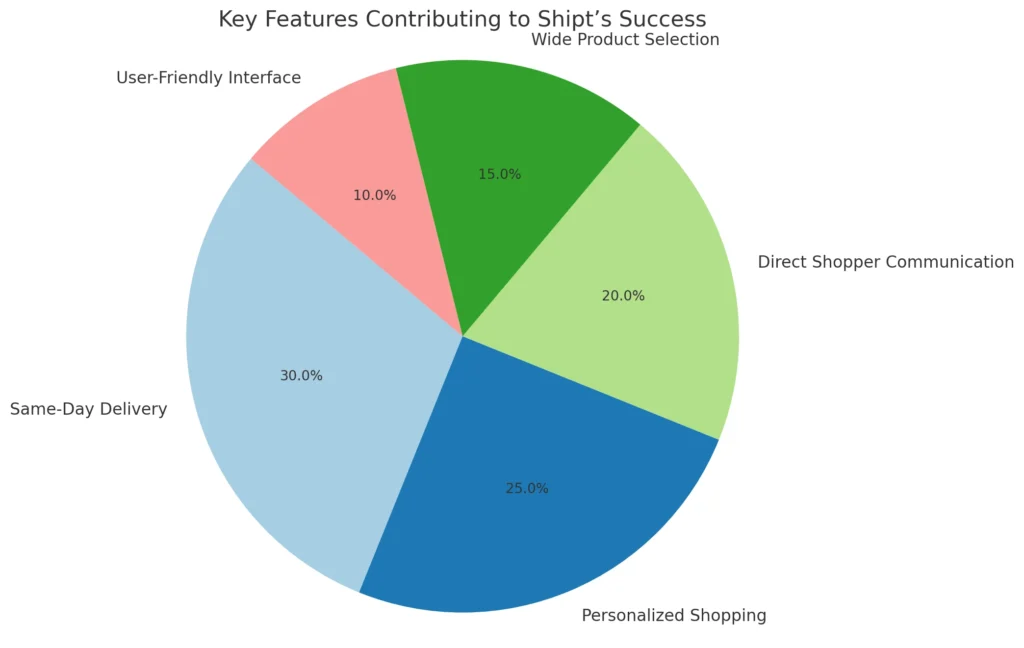
Why Should You Build This App?
The grocery delivery market is booming, and building an app like Shipt offers a wealth of opportunities for entrepreneurs. As more people seek convenient shopping solutions, on-demand grocery apps are becoming essential in our fast-paced lives. Here’s why you should consider entering this lucrative market:
- Growing Consumer Demand: With the rise of e-commerce and the increasing reliance on technology, consumers are now accustomed to shopping online for groceries. The convenience of having groceries delivered directly to their homes has made this service highly sought after. According to recent studies, the grocery delivery industry is projected to grow significantly in the coming years, with an increasing number of households opting for delivery services.
- Flexibility and Convenience: Building an app like Shipt allows you to cater to customers who value flexibility. Whether it’s busy professionals, families with young children, or elderly individuals, everyone appreciates the convenience of getting groceries delivered at their convenience. Your app can bridge the gap between local grocery stores and customers, offering them a solution that fits their lifestyle.
- Potential for Partnerships: Collaborating with local grocery stores and farmers can create a win-win situation. Not only can you help them reach a wider audience, but you can also provide consumers with fresh, locally sourced products. This can enhance your app’s appeal and build customer loyalty.
- Multiple Revenue Streams: A grocery delivery app can generate income through various channels, including delivery fees, subscriptions, and partnerships with retailers. This diversification can help ensure a steady revenue flow, making your business more resilient in fluctuating markets.
- Technology Integration: By leveraging the latest technology, you can create a seamless shopping experience for users. Features like real-time order tracking, AI-driven recommendations, and personalized promotions can significantly enhance customer satisfaction and retention.
Building an app like Shipt not only allows you to tap into a thriving market but also provides a platform for innovation and growth. With the right strategy, you can establish a successful grocery delivery service that meets the evolving needs of consumers.
How to Differentiate Your App from Others
In the competitive landscape of grocery delivery apps, creating a unique offering is essential for standing out. Simply replicating what Shipt does will not be enough; you need to carve out your own niche. Here are some strategies to help you differentiate your app from others in the market:
- Customization and Personalization: Allow users to customize their shopping experience. This could include features like personalized recommendations based on past purchases or dietary preferences. Incorporating user feedback can also enhance personalization, making customers feel valued and understood.
- Local Partnerships: Forge strong partnerships with local grocery stores, farmers, and artisans to offer unique products that larger competitors might not have. This can include organic produce, locally sourced goods, or exclusive items that resonate with the community. Highlighting these local partnerships in your marketing can attract customers who prefer to support local businesses.
- Enhanced User Experience: Invest in a smooth, intuitive interface. Users should be able to navigate your app effortlessly. Features such as one-click ordering, easy search functionality, and a straightforward checkout process can significantly enhance user satisfaction. Additionally, incorporating real-time order tracking adds transparency and builds trust.
- Flexible Delivery Options: Offering varied delivery options can set your app apart. Consider options like scheduled deliveries, express deliveries, or even pick-up points for customers who prefer to collect their groceries. Providing flexibility can cater to a broader audience and increase customer loyalty.
- Subscription Services: Introduce subscription models for frequent shoppers. By offering discounts or exclusive deals for subscribers, you can foster a loyal customer base. This approach not only provides a steady revenue stream but also encourages repeat business.
- Sustainability Features: More consumers are prioritizing sustainability in their shopping choices. Integrating eco-friendly options, such as plastic-free packaging or partnerships with sustainable brands, can attract environmentally conscious customers. Highlighting these features in your marketing can differentiate your app in a crowded market.
By implementing these strategies, you can create a grocery delivery app that not only competes with Shipt but also resonates deeply with your target audience. Differentiation is key to capturing market share and ensuring long-term success.
Comparison of Differentiation Strategies among Top Grocery Delivery Apps
| Differentiation Strategy | Shipt | Instacart | Amazon Fresh | Your App |
|---|---|---|---|---|
| Customization | Basic recommendations | Personalized suggestions | Limited personalization | Advanced customization |
| Local Partnerships | Yes, with select stores | Yes, various retailers | Limited local options | Focus on local goods |
| User Experience | User-friendly interface | Intuitive app | Seamless Amazon experience | Highly intuitive design |
| Flexible Delivery Options | Same-day delivery | Same-day and scheduled | Scheduled delivery | Express and scheduled |
| Subscription Services | Yes | Yes | Yes | Competitive pricing |
| Sustainability Features | Limited options | Some sustainable products | Focus on eco-friendly items | Strong sustainability focus |
Market Size and Industry Growth
The grocery delivery industry is experiencing rapid growth, driven by shifting consumer habits and the increasing demand for convenience. With more people opting for online shopping, the market presents a lucrative opportunity for new entrants. Here’s a closer look at the current landscape and future projections.
- Expanding Market: According to industry reports, the grocery delivery market is expected to grow significantly over the next few years. With more consumers embracing the idea of online grocery shopping, the market is projected to reach approximately $50 billion by 2027, representing a robust compound annual growth rate (CAGR) of around 20%. This growth is fueled by a combination of factors, including the rise of e-commerce, busy lifestyles, and the desire for convenience.
- Changing Consumer Preferences: Today’s consumers value convenience more than ever. With a simple app on their smartphones, they can order groceries at any time, bypassing long lines and crowded stores. Additionally, the COVID-19 pandemic accelerated the shift to online shopping, as many people sought safer alternatives to traditional grocery shopping.
- Demographics Driving Growth: The primary demographic driving this trend includes young professionals, busy families, and health-conscious individuals. Millennials and Gen Z consumers, who are tech-savvy and accustomed to using apps for everyday needs, are particularly drawn to grocery delivery services. This demographic shift highlights the importance of creating a user-friendly and efficient app to meet their expectations.
- Regional Opportunities: While the market is growing globally, certain regions are experiencing faster growth. Urban areas, where the demand for convenience is highest, present the best opportunities for grocery delivery services. By focusing on metropolitan areas, new apps can capture a larger share of the market.
- Competition Landscape: As the market expands, competition will intensify. Existing players like Shipt, Instacart, and Amazon Fresh dominate the market, but there’s still room for new entrants, especially those that can offer unique features or better customer service.
By understanding the market size and growth trends, aspiring entrepreneurs can make informed decisions when building their grocery delivery apps. Capitalizing on this growing demand will be key to establishing a successful business in this evolving landscape.
Market Growth and Revenue Projections for the Grocery Delivery Industry
| Year | Market Size (in Billion $) | Growth Rate (%) | Key Consumer Preferences |
|---|---|---|---|
| 2023 | 20 | 25 | Increasing preference for convenience |
| 2024 | 25 | 20 | Preference for local and fresh products |
| 2025 | 32 | 28 | Growth in urban populations |
| 2026 | 40 | 25 | Higher demand for online shopping options |
| 2027 | 50 | 20 | Continued reliance on technology |
Key Features of a Grocery Delivery App Like Shipt
Building a successful grocery delivery app requires incorporating essential features that enhance user experience and streamline operations. Here are the key features your app should include to rival platforms like Shipt:
- User-Friendly Interface: A clean, intuitive design is crucial for attracting and retaining users. Your app should allow customers to navigate effortlessly, browse categories, and search for items with ease. A visually appealing layout can significantly enhance user engagement.
- Personalized Recommendations: Utilizing AI algorithms, your app can offer personalized suggestions based on users’ shopping habits and preferences. This feature not only improves the shopping experience but also encourages customers to explore new products.
- Real-Time Order Tracking: Providing customers with real-time updates on their order status is essential for building trust. Users should be able to track their groceries from the moment they place an order until they arrive at their doorstep.
- Multiple Payment Options: Offering a variety of payment methods, including credit/debit cards, digital wallets, and cash on delivery, can cater to diverse customer preferences. The more flexible your payment options, the more likely customers will complete their purchases.
- Easy Scheduling for Deliveries: Allow users to choose their preferred delivery time, whether it’s same-day, scheduled, or even a specific time slot. This flexibility enhances customer satisfaction and accommodates busy lifestyles.
- Customer Reviews and Ratings: Implementing a review system can help improve service quality and build trust among potential customers. Positive feedback can attract new users, while constructive criticism can guide your app’s improvements.
- Admin Dashboard: A robust admin panel is crucial for managing orders, tracking delivery personnel, and analyzing customer data. This backend feature allows for efficient monitoring of operations and better decision-making.
- Push Notifications: Keeping customers informed with updates, promotions, and reminders through push notifications can enhance engagement and drive repeat purchases. Personalized notifications can also encourage users to complete their orders.
- Loyalty Programs: Incorporate loyalty rewards or referral bonuses to encourage repeat business. Offering discounts or points for frequent purchases can create a loyal customer base.
- User Support: Providing customer support through chat, email, or phone ensures that users can get help whenever they need it. Excellent customer service can be a significant differentiator in the competitive grocery delivery market.
Want to see how an on-demand grocery delivery app works?
Get our customizable platform for grocery delivery app today.
Technical Requirements
Building a grocery delivery app like Shipt requires a solid technical foundation to ensure a smooth user experience and efficient operations. Here’s a breakdown of the essential technical requirements you’ll need to consider when developing your app:
- Frontend Development: The frontend is what users interact with. It’s vital to choose technologies that create a responsive and visually appealing interface. Popular frameworks include:
- React Native: Great for building cross-platform apps with a native feel.
- Flutter: Offers a rich set of pre-designed widgets for a smooth UI experience.
- Vue.js: A progressive framework for building user interfaces, particularly if you want to focus on web versions of your app.
- Backend Development: The backend handles data management, user authentication, and business logic. Key technologies to consider include:
- Node.js: Ideal for building scalable network applications, allowing for real-time data processing.
- Python (Django or Flask): Offers a robust framework for developing web applications quickly and efficiently.
- Ruby on Rails: Known for its speed in developing database-backed web applications.
- Database Management: A reliable database is crucial for storing user data, product information, and order history. Options include:
- MySQL: A popular relational database management system for structured data.
- MongoDB: A NoSQL database ideal for handling large volumes of unstructured data, providing flexibility in data storage.
- APIs (Application Programming Interfaces): Integrating various APIs can enhance functionality. Consider including:
- Payment Gateway APIs (e.g., Stripe, PayPal): To securely process payments.
- Mapping and Location APIs (e.g., Google Maps API): To provide accurate delivery tracking and routing for drivers.
- Messaging APIs (e.g., Twilio): For real-time communication between customers and delivery drivers.
- Cloud Hosting: Choose a reliable cloud hosting provider to ensure your app is scalable and can handle traffic spikes. Options include:
- AWS (Amazon Web Services): Offers a wide range of services, including computing power and storage.
- Google Cloud Platform: Known for its strong data analytics and machine learning capabilities.
- Microsoft Azure: Provides a comprehensive cloud solution with a focus on enterprise applications.
- Security Measures: Implement robust security measures to protect user data and transactions. This includes:
- SSL Certificates: To encrypt data transmitted between users and your server.
- Two-Factor Authentication: To enhance account security during login.
- Regular Security Audits: To identify and fix vulnerabilities.
By carefully selecting the right technologies and implementing strong security measures, you can build a reliable and efficient grocery delivery app that meets user expectations and stands up to the competition.
Design and User Interface (UI/UX)
In the world of grocery delivery apps, a seamless design and user interface (UI/UX) are paramount. A well-designed app not only attracts users but also enhances their shopping experience, encouraging them to return time and time again. Here are the key aspects to consider when designing your grocery delivery app:
- Intuitive Navigation: Users should be able to navigate your app effortlessly. A clear and organized layout with easy-to-find categories allows customers to quickly locate their desired items. Utilize drop-down menus, filters, and search bars to streamline the browsing experience.
- Engaging Visuals: High-quality images of products can significantly impact purchase decisions. Ensure that your app showcases vibrant, clear images that highlight the freshness and quality of the groceries. Incorporating videos or 360-degree views can further enhance user engagement.
- Consistent Branding: Your app should reflect a consistent brand identity through colors, fonts, and graphics. This not only builds brand recognition but also creates a sense of trust and reliability among users. A cohesive design helps in reinforcing your brand’s message and values.
- Responsive Design: With users accessing apps from various devices, it’s essential to ensure that your design is responsive. Whether a user is on a smartphone, tablet, or desktop, the app should function flawlessly and look great. Responsive design improves usability and accessibility, ultimately leading to higher customer satisfaction.
- Smooth Checkout Process: The checkout process is where many users abandon their carts. Simplify this process by minimizing the number of steps required to complete a purchase. Features such as guest checkout, saved payment methods, and auto-fill forms can expedite the experience.
- Real-Time Feedback: Incorporate visual feedback to guide users through their interactions. For example, when a user adds an item to their cart, an animation or confirmation message can enhance the user experience and reassure them that their action has been completed successfully.
- User Testing and Feedback: Regularly test your app with real users to gather feedback on its usability. Conduct surveys or focus groups to identify pain points and areas for improvement. Iterating based on user input can lead to a more refined and enjoyable experience.
- Accessibility Features: Make your app accessible to all users, including those with disabilities. Implement features such as voice commands, text-to-speech options, and adjustable font sizes to cater to a wider audience.
A well-crafted UI/UX design not only delights users but also encourages repeat business. By prioritizing these elements, your grocery delivery app can create a memorable shopping experience that keeps customers coming back.
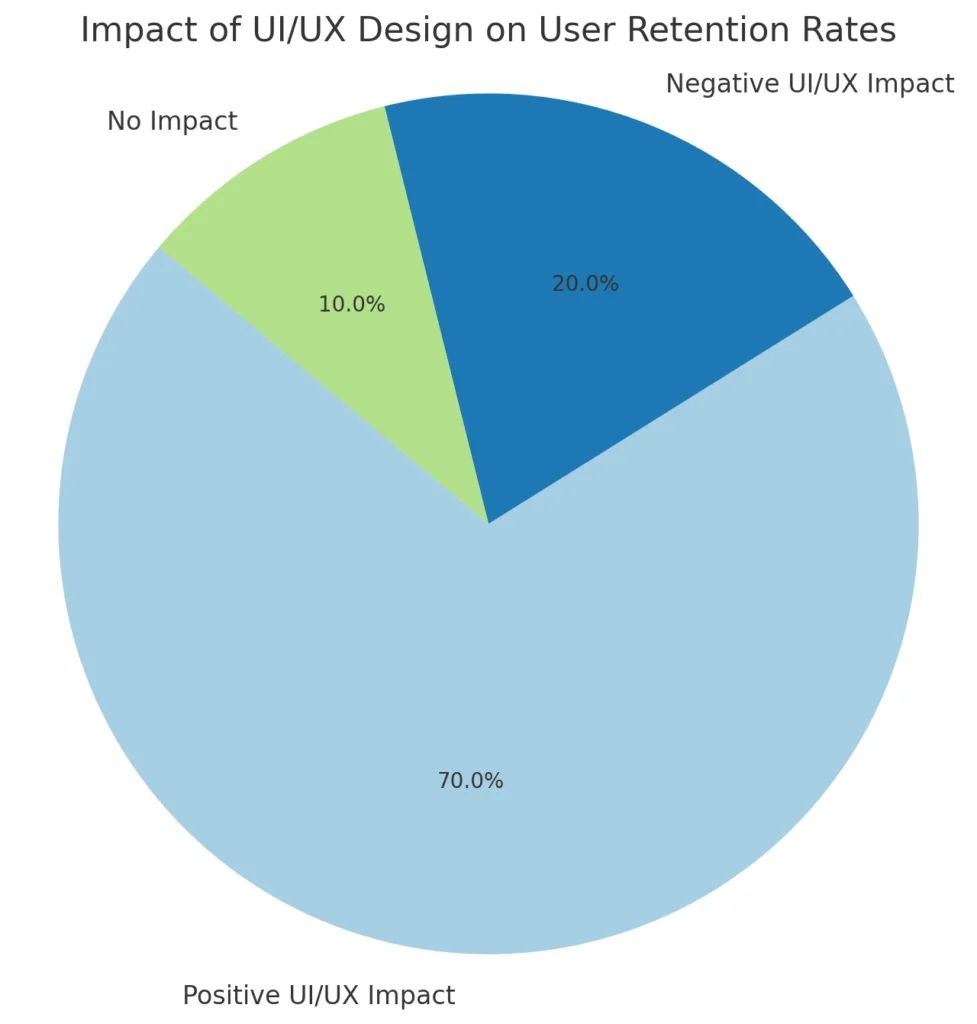
Minimum Viable Product (MVP)
When launching a grocery delivery app like Shipt, starting with a Minimum Viable Product (MVP) is a smart strategy. An MVP allows you to test your concept with minimal investment and gather valuable feedback from real users. Here’s how to effectively develop an MVP for your grocery delivery app:
- Define Core Features: Focus on the essential functionalities that address your target audience’s primary needs. For a grocery delivery app, these might include user registration, product browsing, shopping cart functionality, and basic order processing. Avoid adding unnecessary features at this stage; keep it simple.
- User-Centric Design: Even with an MVP, user experience should remain a priority. Design an intuitive interface that makes it easy for customers to navigate the app. Ensure the core features are easily accessible, providing users with a pleasant shopping experience.
- Conduct Market Research: Before development, conduct thorough market research to understand your competitors and target audience. Identify gaps in the market that your MVP can fill. This will help you tailor your app to meet specific user needs.
- Agile Development Process: Use agile development methodologies to build your MVP. This approach allows for iterative development, enabling you to make adjustments based on user feedback quickly. Regularly releasing updates and improvements keeps your project dynamic and responsive to market demands.
- Feedback Loop: After launching your MVP, actively solicit feedback from users. Utilize surveys, focus groups, and in-app feedback forms to gather insights on what works and what needs improvement. This feedback is invaluable for refining your app and ensuring it aligns with user expectations.
- Test and Iterate: Use the feedback collected to make data-driven decisions on further development. Prioritize changes that enhance user experience and functionality. Continuous testing and iteration will lead to a more robust final product.
- Plan for Scale: While an MVP is about starting small, always keep scalability in mind. Build your app on a flexible architecture that can accommodate future growth and additional features. This foresight will save time and resources down the line.
- Monitor Key Metrics: Track key performance indicators (KPIs) such as user retention, engagement rates, and order completion rates. Analyzing these metrics will help you gauge the success of your MVP and identify areas for improvement.
By focusing on creating a strong MVP, you can validate your concept and lay the foundation for a successful grocery delivery app. This strategic approach minimizes risk while maximizing your chances of building a product that resonates with users.
| Development Stage | MVP Development | Full-Scale App Development |
|---|---|---|
| Estimated Cost | $20,000 – $50,000 | $100,000 – $300,000 |
| Development Time | 2 – 3 months | 6 – 12 months |
| Core Features | Basic user registration, product browsing, cart, checkout | Advanced features, personalization, real-time tracking, loyalty programs |
| Testing Phase | Limited user testing | Extensive user testing and QA |
| Launch Strategy | Focus on core market | Comprehensive marketing strategy |
| Post-Launch Iterations | Rapid adjustments based on feedback | Scheduled updates and enhancements |
Development Process
Creating a grocery delivery app like Shipt involves a structured development process that ensures each stage is well-planned and executed. Here’s a step-by-step guide to navigating the app development journey effectively:
- Idea Validation: Before diving into development, validate your app idea. Conduct surveys, interviews, and market research to understand customer needs and preferences. This will help you refine your concept and ensure there is a demand for your grocery delivery service.
- Planning and Wireframing: Once you have a clear idea, begin planning the app’s structure and features. Create wireframes to visualize the user journey and layout. This will serve as a blueprint for your app, helping you organize functionalities and design elements before actual development begins.
- Designing the UI/UX: With wireframes in hand, focus on designing an engaging user interface and user experience. Consider factors such as color schemes, typography, and visual elements that resonate with your target audience. An appealing design can significantly enhance user satisfaction and retention.
- Frontend Development: The frontend is what users interact with. Begin coding the app’s user interface using frameworks like React Native or Flutter. Ensure that the app is responsive and accessible across various devices, from smartphones to tablets.
- Backend Development: Parallel to frontend development, work on the backend. Set up servers, databases, and APIs to manage data processing, user authentication, and order management. Technologies like Node.js or Python can streamline this process, ensuring a robust backend architecture.
- Integration of Features: As you develop both the frontend and backend, start integrating key features such as payment gateways, real-time tracking, and notification systems. This phase is crucial for ensuring that all components work seamlessly together.
- Testing: Conduct thorough testing to identify and fix bugs. Utilize both manual and automated testing methods to ensure all features function correctly and the app performs well under various conditions. User testing can provide valuable insights into usability issues that may not be apparent during development.
- Deployment: Once testing is complete and any necessary adjustments are made, deploy your app to the app stores. Prepare for launch by implementing marketing strategies to attract initial users. Effective app store optimization (ASO) will enhance visibility and downloads.
- Post-Launch Monitoring: After launching the app, continuously monitor its performance. Track key metrics such as user engagement, retention rates, and feedback. This data will guide future updates and improvements.
- Iterative Improvements: Use the insights gained from monitoring to make iterative improvements. Regularly update your app based on user feedback, market trends, and technological advancements. This ongoing process will help maintain user satisfaction and keep your app competitive.
By following this structured development process, you can build a high-quality grocery delivery app that meets user expectations and stands out in the crowded marketplace.

Cost Estimation and Timeframe
Understanding the costs and timelines involved in developing a grocery delivery app is crucial for budgeting and planning your project. Here’s a detailed breakdown of what to expect regarding development costs and the time required to bring your app to market:
- Development Costs: The total cost of developing your grocery delivery app can vary significantly based on several factors, including the complexity of features, design requirements, and the development team’s location. Here’s a general overview of the estimated costs:
- MVP Development: Building a Minimum Viable Product (MVP) typically ranges from $20,000 to $50,000. This phase focuses on essential features that allow you to enter the market quickly and validate your concept.
- Full-Scale App Development: If you opt for a more feature-rich application, expect to invest between $100,000 and $300,000. This includes advanced functionalities, integrations, and a comprehensive user interface.
- Ongoing Maintenance Costs: After launch, factor in maintenance costs of around 15-20% of the initial development cost per year to keep the app updated and bug-free.
- Timeframe: The timeline for developing your app can also vary based on its complexity and the resources available. Here’s a breakdown of the estimated timeframes for different phases:
- MVP Development: Approximately 2 to 3 months to complete. This phase allows for quick market entry with essential features.
- Full-Scale Development: Expect the timeline to extend to 6 to 12 months. This includes extensive testing and the implementation of advanced features.
- Post-Launch Updates: Regular updates and improvements should be planned for every 1-3 months after launch, depending on user feedback and changing market trends.
Monetization Strategies
Creating a sustainable revenue model is crucial for the success of your grocery delivery app. As competition in the market grows, finding effective ways to monetize your service will not only help cover operational costs but also contribute to profitability. Here are some proven monetization strategies for your grocery delivery app:
- Delivery Fees: Charging a delivery fee is one of the most straightforward revenue models. You can implement a flat fee per order or vary the fee based on distance, order size, or delivery time. Offering free delivery for larger orders can also encourage customers to buy more.
- Subscription Model: Introducing a subscription service can generate steady revenue. Customers pay a monthly or annual fee for perks such as free deliveries, exclusive discounts, or early access to special offers. This model not only encourages loyalty but also ensures a predictable income stream.
- Commission from Retailers: Partnering with local grocery stores allows you to earn commissions on every sale made through your app. This not only benefits the stores by increasing their sales but also provides you with a percentage of the revenue, creating a win-win situation.
- In-App Advertising: Once your user base grows, you can incorporate advertising into your app. This could involve promoting featured products, special deals from partner stores, or even third-party ads. However, be cautious with this approach to avoid overwhelming users with ads.
- Affiliate Marketing: Partner with brands or suppliers to feature their products on your app. You can earn a commission for each sale generated through your app. This strategy allows you to enhance your product offerings without the need to hold inventory.
- Promotional Campaigns: Running time-limited promotions or discounts can encourage users to order more frequently. You can offer discounts for first-time users, holiday promotions, or loyalty rewards to encourage repeat purchases.
- Value-Added Services: Consider offering additional services such as meal planning, recipe suggestions, or grocery list creation. These features can enhance user experience and provide opportunities for monetization through premium subscriptions.
- Data Analytics Services: With the data collected from users, you can offer insights and analytics to partner retailers. Understanding consumer preferences and buying patterns can be valuable for stores looking to improve their product offerings.
By implementing these monetization strategies, you can create a robust revenue model for your grocery delivery app. The key is to balance profitability with customer satisfaction, ensuring that users feel they are receiving good value for their money.
Launching and Marketing the App
Once your grocery delivery app is developed, the next crucial step is launching and effectively marketing it to attract users. A well-planned launch can set the tone for your app’s success in a competitive market. Here’s a comprehensive guide to help you navigate the launch and marketing phases:
- Pre-Launch Strategy: Building anticipation before your app goes live is essential. Use social media, email marketing, and a dedicated landing page to generate buzz. Offer sneak peeks of the app’s features and benefits to entice potential users. Consider running a referral program where users can sign up early and invite friends for exclusive perks. You can even create and print custom invitations using Adobe Express.
- Target Audience Identification: Clearly define your target audience to tailor your marketing efforts. Are you focusing on busy professionals, families, or college students? Understanding your audience will help you craft messages that resonate and address their specific needs.
- App Store Optimization (ASO): Optimize your app store listing to improve visibility and downloads. Use relevant keywords in your app title and description, and create engaging visuals and screenshots that highlight your app’s features. Encourage satisfied users to leave positive reviews, as this can significantly impact your app’s ranking.
- Social Media Marketing: Leverage social media platforms to promote your app. Create engaging content that showcases your app’s benefits, share user testimonials, and run targeted ads. Platforms like Instagram and Facebook are particularly effective for visually showcasing your grocery offerings.
- Influencer Partnerships: Collaborate with local influencers or food bloggers to reach a wider audience. Influencers can create authentic content showcasing your app in action, helping to build credibility and trust with potential users.
- Content Marketing: Develop a content marketing strategy that includes blog posts, videos, and infographics about grocery shopping tips, recipes, and health-related topics. This not only positions your app as a valuable resource but also improves your SEO efforts.
- Email Campaigns: Use email marketing to keep potential users informed and engaged. Share updates, promotions, and useful content to nurture leads and convert them into active users. Personalized emails can significantly enhance user engagement.
- Launch Events and Promotions: Consider hosting a launch event, either online or in person, to celebrate your app’s debut. Offer limited-time promotions or discounts to incentivize users to download and use your app during the initial launch phase.
- Post-Launch Engagement: After the launch, continue to engage users through regular updates and promotions. Gather feedback to improve the app and respond promptly to user inquiries or concerns. Building a strong relationship with your user base can lead to increased loyalty and word-of-mouth referrals.
- Monitor and Adjust: Utilize analytics tools to track user behavior, downloads, and engagement. Analyze this data to refine your marketing strategies, focusing on what resonates most with your audience. Adapting your approach based on real-time insights will enhance your app’s performance.
By implementing a comprehensive launch and marketing strategy, you can effectively position your grocery delivery app in the market, attract users, and drive growth. The key is to remain agile, responsive, and customer-focused throughout the process.
Why Trust Miracuves Solutions for Your Next Project?
When it comes to building a grocery delivery app like Shipt, choosing the right development partner is crucial for your project’s success. Miracuves Solutions stands out as a top choice for several compelling reasons:
- Expertise in App Development: With a team of seasoned developers, designers, and project managers, Miracuves Solutions brings extensive experience in app development. Our expertise spans various industries, allowing us to tailor solutions specifically to your grocery delivery needs.
- Cost-Effective Solutions: Building an app doesn’t have to break the bank. Miracuves Solutions offers competitive pricing that enables you to create a high-quality app at a fraction of the cost compared to larger firms. We focus on delivering value without compromising on quality.
- Speedy Development Process: Time is of the essence in the fast-paced grocery delivery market. Our agile development methodology ensures that your app is built efficiently, allowing you to launch quickly and capture market opportunities before your competitors.
- Customizable Templates: At Miracuves Solutions, we offer a range of customizable templates that can be tailored to fit your specific business model and branding. This flexibility enables you to launch your app faster while still maintaining a unique identity in the market.
- User-Centric Design: We prioritize user experience in our design approach. Our UI/UX experts create intuitive and engaging interfaces that enhance customer satisfaction and encourage repeat usage. By focusing on the end user, we help you build an app that resonates with your audience.
- Comprehensive Support: From initial consultation to post-launch support, Miracuves Solutions is with you every step of the way. We provide ongoing maintenance, updates, and customer support to ensure your app remains competitive and continues to meet user needs.
- Data-Driven Insights: We leverage analytics to drive decisions and enhance your app’s performance. By monitoring user behavior and engagement, we can provide insights that help you refine your offering and improve user retention.
- Proven Track Record: Our portfolio showcases successful projects across various sectors, demonstrating our ability to deliver high-quality apps that meet business objectives. Client testimonials highlight our commitment to excellence and customer satisfaction.
Choosing Miracuves Solutions as your development partner means selecting a team that is dedicated to bringing your vision to life. With our expertise, commitment to quality, and customer-centric approach, you can confidently embark on your grocery delivery app journey.
Legal and Regulatory Considerations
Navigating the legal and regulatory landscape is crucial when launching a grocery delivery app. Understanding and adhering to applicable laws ensures that your business operates smoothly and builds trust with users. Here are the key legal considerations you need to keep in mind:
- Business Structure and Licensing: Choose the right business structure—whether it’s a sole proprietorship, partnership, LLC, or corporation. Each structure has its own implications for liability, taxes, and regulatory compliance. Additionally, you may need to obtain specific licenses or permits to operate your grocery delivery service, depending on your location.
- Data Protection and Privacy Laws: Handling customer data responsibly is vital. Familiarize yourself with data protection laws such as the General Data Protection Regulation (GDPR) in the EU or the California Consumer Privacy Act (CCPA) in the U.S. These regulations dictate how you must collect, store, and process user data, ensuring transparency and safeguarding user privacy.
- Payment Processing Compliance: If your app handles payments, compliance with payment processing regulations is essential. Ensure that your payment gateway is PCI DSS (Payment Card Industry Data Security Standard) compliant to protect against data breaches and fraud.
- Consumer Protection Laws: Understand consumer protection laws that apply to online sales. These laws may dictate how you handle returns, refunds, and customer complaints. Clearly communicating your policies on these matters can enhance customer trust and satisfaction.
- Contractual Agreements: If you partner with local grocery stores or delivery drivers, it’s crucial to draft clear contractual agreements that outline roles, responsibilities, and compensation. This protects both parties and ensures everyone is on the same page regarding expectations and deliverables.
- Employment Laws: If you plan to hire delivery drivers, familiarize yourself with employment laws in your area. This includes understanding worker classification (employee vs. independent contractor), wage laws, and benefits. Proper classification can prevent legal issues down the line.
- Health and Safety Regulations: Depending on your location, there may be health and safety regulations that affect the handling and delivery of food products. Ensure compliance with local health codes to avoid potential fines or business interruptions.
- Advertising and Marketing Compliance: When promoting your app, be aware of regulations surrounding advertising, including truth-in-advertising laws and online marketing guidelines. Ensure that your marketing materials are accurate and not misleading.
By proactively addressing these legal and regulatory considerations, you can mitigate risks and establish a solid foundation for your grocery delivery app. Consulting with legal professionals can also help you navigate these complexities and ensure compliance with all relevant laws.
Future Growth Potential
The grocery delivery industry is not just a trend; it represents a significant shift in how consumers approach shopping. As technology evolves and consumer preferences change, there are numerous opportunities for growth and innovation within this space. Here are some key factors to consider for the future growth potential of your grocery delivery app:
- Technological Advancements: The rapid development of technology is reshaping the grocery delivery landscape. Incorporating advanced technologies such as artificial intelligence (AI), machine learning, and data analytics can enhance user experience by providing personalized recommendations, optimizing delivery routes, and improving inventory management.
- Expansion into New Markets: As online grocery shopping becomes mainstream, there are ample opportunities to expand into new geographic markets. Urban areas, where the demand for convenience is high, can be prime targets. Additionally, exploring international markets may open new revenue streams, especially in regions where grocery delivery is still developing.
- Integration with Smart Technologies: With the rise of smart home devices, integrating your app with technologies like smart refrigerators can create unique opportunities. For instance, your app could automatically suggest grocery orders based on what’s running low in the fridge or pantry, offering an ultra-convenient shopping experience.
- Sustainability Initiatives: Consumers are increasingly prioritizing sustainability in their purchasing decisions. Emphasizing eco-friendly practices, such as reducing packaging waste and partnering with local organic farms, can attract environmentally conscious consumers. Building sustainability into your business model not only appeals to this demographic but also helps improve your brand image.
- Enhancing Customer Experience: Investing in customer experience will be key to retaining users. Providing features like real-time tracking, seamless returns, and exceptional customer support can enhance satisfaction and encourage loyalty. Additionally, soliciting and implementing user feedback can help you stay ahead of customer expectations.
- Diversifying Product Offerings: Beyond groceries, consider expanding your product range to include meal kits, household essentials, and even pet supplies. This diversification can make your app a one-stop shop for consumers, increasing order value and frequency.
- Strategic Partnerships: Collaborating with other businesses can enhance your service offering. Consider partnerships with local restaurants for meal deliveries or tech companies for integrated solutions. These collaborations can provide additional revenue streams and broaden your customer base.
- Adapting to Changing Consumer Behaviors: The grocery delivery market is influenced by changing consumer behaviors, especially in the wake of the pandemic. Staying attuned to these shifts and adapting your services accordingly—such as offering contactless delivery options—will be essential for ongoing relevance in the market.
Conclusion
Building a grocery delivery app like Shipt presents a promising opportunity in a rapidly growing market. As consumer preferences continue to shift toward convenience and online shopping, your app can fulfill a vital need in today’s busy lifestyles. Throughout this guide, we’ve explored the essential steps to create a successful grocery delivery service, from understanding key features and technical requirements to navigating the legal landscape and planning effective marketing strategies.
The importance of user experience cannot be overstated. A well-designed app with intuitive navigation, personalized recommendations, and seamless payment options will not only attract users but also foster loyalty. Additionally, leveraging innovative technologies and adapting to changing consumer behaviors will position your app for long-term success.
Implementing a solid monetization strategy is crucial for sustainability. By diversifying revenue streams—whether through delivery fees, subscriptions, or partnerships with local retailers—you can create a robust financial foundation for your business.
As you embark on this journey, remember that continuous improvement is key. Regularly gather user feedback, monitor market trends, and be ready to adapt your strategies. With the right approach, your grocery delivery app can not only compete with established players but also carve out its own niche in the market.
Now is the perfect time to take action. With a well-thought-out plan, a clear understanding of your target audience, and the right development partner like Miracuves Solutions, you can launch a grocery delivery app that meets the needs of today’s consumers and thrives in the future.
Looking to create an on-demand delivery app like Shipt?
Our expert team can help you build a seamless platform that connects users with personal shoppers and delivery services for groceries, essentials, and more.
FAQs
How much does it cost to build an app like Shipt?
The cost to develop a grocery delivery app can vary widely, typically ranging from $20,000 to $50,000 for a Minimum Viable Product (MVP) and $100,000 to $300,000 for a full-scale app. Factors such as features, design, and development team location will influence the total cost.
What are the key features of a grocery delivery app?
Essential features include a user-friendly interface, real-time order tracking, multiple payment options, personalized recommendations, and easy scheduling for deliveries. These functionalities enhance user experience and drive engagement.
How long does it take to develop an app like Shipt?
Developing an MVP typically takes 2 to 3 months, while a full-scale app can take 6 to 12 months. The timeframe depends on the complexity of the features and the development approach.
Can I customize a Shipt clone?
Absolutely! A Shipt clone can be tailored to fit your specific business needs. Working with a development partner like Miracuves Solutions allows for customization of templates to ensure your app reflects your brand identity and unique value proposition.
What are the best marketing strategies for a grocery delivery app?
Effective marketing strategies include pre-launch buzz, social media marketing, influencer partnerships, app store optimization (ASO), and content marketing. Engaging potential users before and after launch can significantly boost visibility and downloads.



